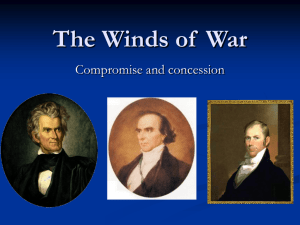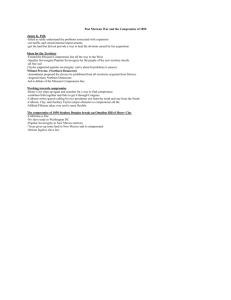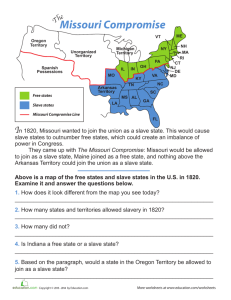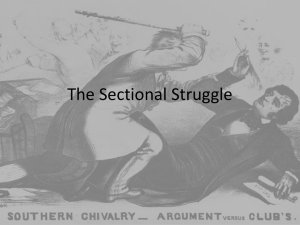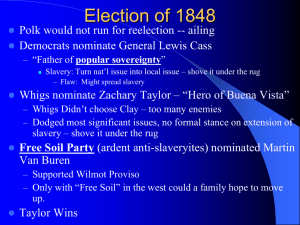8/25/2014 As the United States expanded to west, Americans
advertisement
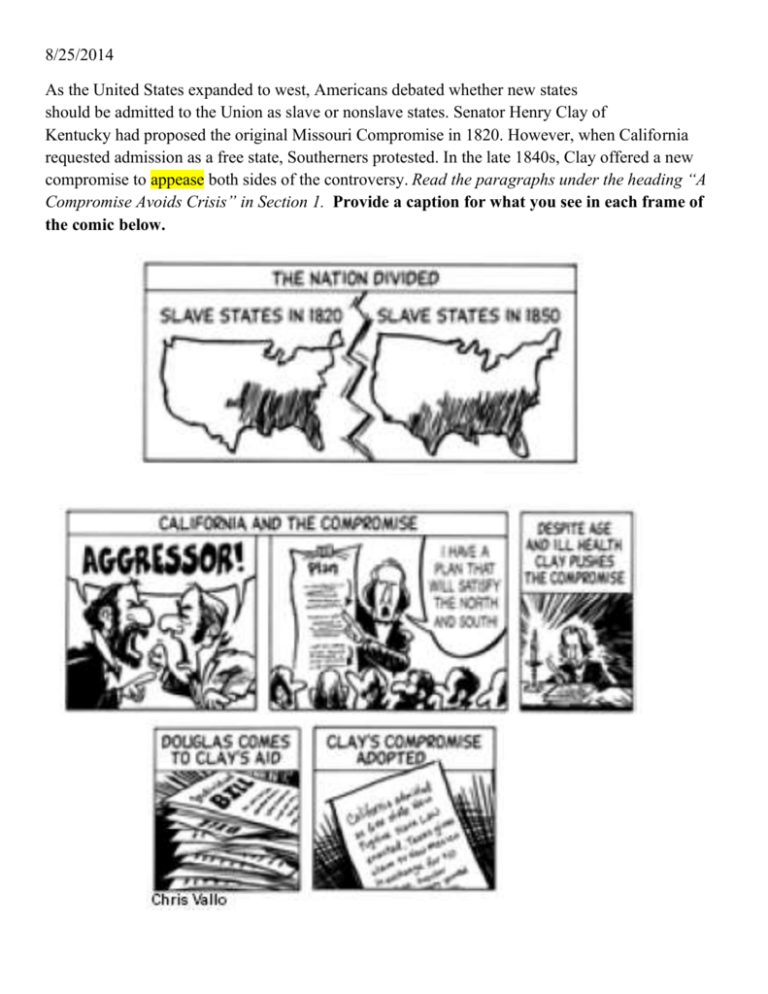
8/25/2014 As the United States expanded to west, Americans debated whether new states should be admitted to the Union as slave or nonslave states. Senator Henry Clay of Kentucky had proposed the original Missouri Compromise in 1820. However, when California requested admission as a free state, Southerners protested. In the late 1840s, Clay offered a new compromise to appease both sides of the controversy. Read the paragraphs under the heading “A Compromise Avoids Crisis” in Section 1. Provide a caption for what you see in each frame of the comic below. 8/26/2014 Provisions of the Compromise of 1850 California enters the Union as a free state. The territory acquired from Mexico uses popular sovereignty to determine its status as slave or free. Slave trading, but not slavery, ends in Washington, D.C. Congress agrees to pass a strict runaway slave law. Texas relinquishes its claim to New Mexico in exchange for $10 million. 1. How was the issue of slavery decided in the territory ceded by Mexico? A Congress declared the territory free. B Residents exercised popular sovereignty. C The new states’ constitutions permitted slavery. D Mexico required that the territory remain free. 2. What was one outcome of the Compromise of 1850? A B C D Slavery was banned in Washignton, D.C. Stephen A. Douglas lost prestige. Congress passed the Fugitive Slave Act. Northern and Southern tensions immediately increased. 8/27/2014: Use secede in a sentence with context clues. Circle your clues. Two people will be selected to share their examples on the board. 8/28/2014: How did personal liberty laws nullify the Fugitive Slave Act? 8/29/2014: (sec 3) Dred Scott was a slave who had lived with his master in free territory for 12 years. Following his return to the South and the death of his master, Scott spent 10 years suing for his freedom. The Supreme Court of the United States had the final say in Scott’s suit against the executor of his master’s estate, John A. Sandford, a New York resident and brother of the master’s widow. In 1857, the Court ruled that Scott, as an African American slave, was not—and could never become—a U.S. citizen; therefore, he had no right to sue a U.S. citizen in any jurisdiction. The people depicted on this newspaper are Dred Scott and his family. 1.Why do you think they are shown dressed as they are? 2.Do you think this newspaper supports abolitionists or proslavery advocates? Explain.


